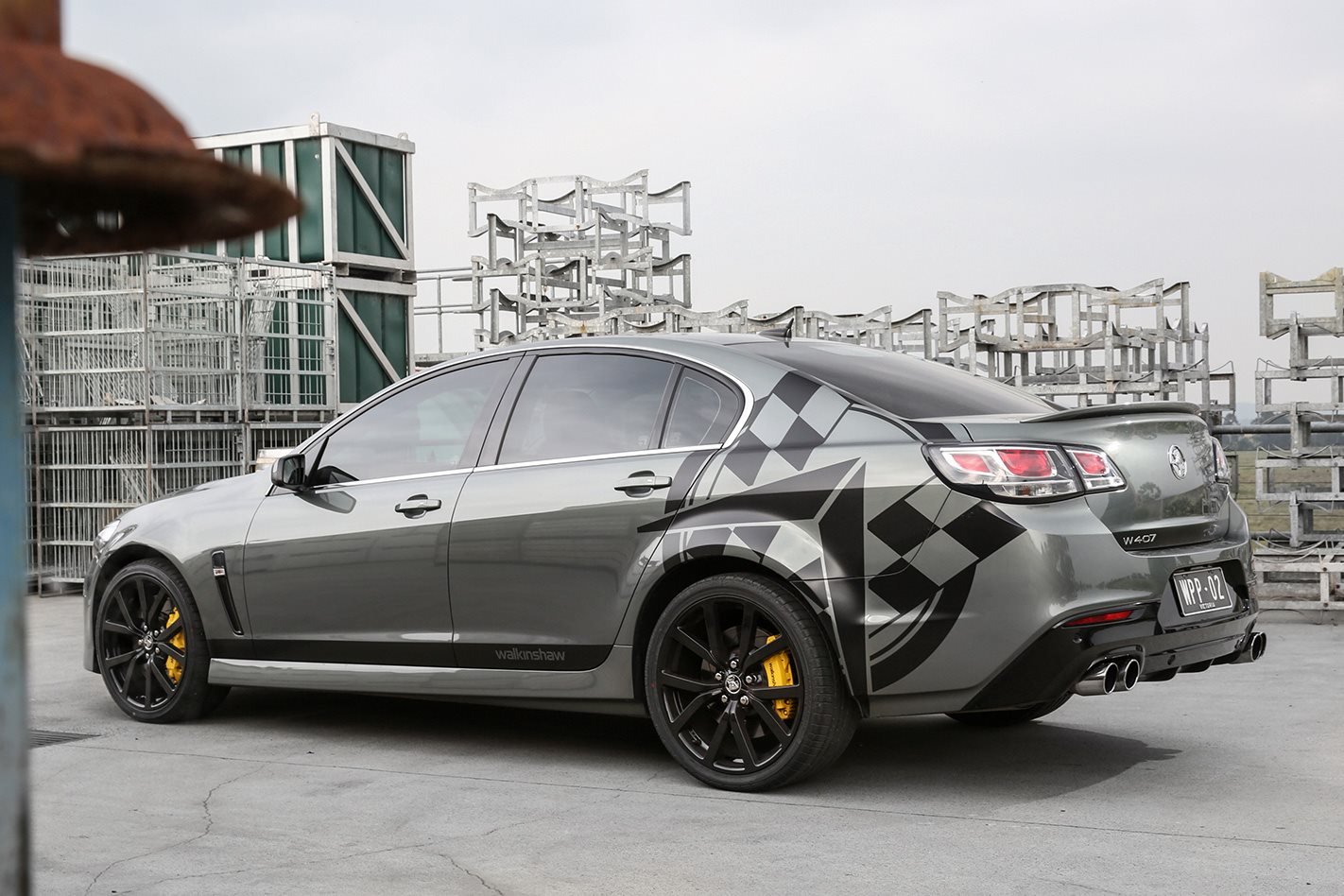Call me weird (again) but I like offbeat things. I like asymmetry like offset racing stripes.
I like Andie MacDowell’s slightly crooked, ever-so goofy smile. I like the stray, extra drumbeat at the start of Times Like These by the Foo Fighters. And I absolutely love the ropey, lopey idle of a big-inch V8 with a lumpy great cam jammed up its valley.
Is there any better noise an idling engine can make? Don’t think so. So you’ll forgive me if I’m perhaps prematurely attracted to Walkinshaw Performance’s (WP) latest attack on sense and the senses.

Enter WP’s 407 package which, as the name suggests, takes a normally aspirated 6.2-litre LS3 V8 and cams it to the point where it’s capable of 407kW at the flywheel at max-yowl. It’s available as an aftermarket kit and you can apply it to your new HSV or even the current 304kW VF Series II Commodore SS. Start with a second-hand car; doesn’t matter, the results will be the same – 407kW at 6250rpm.
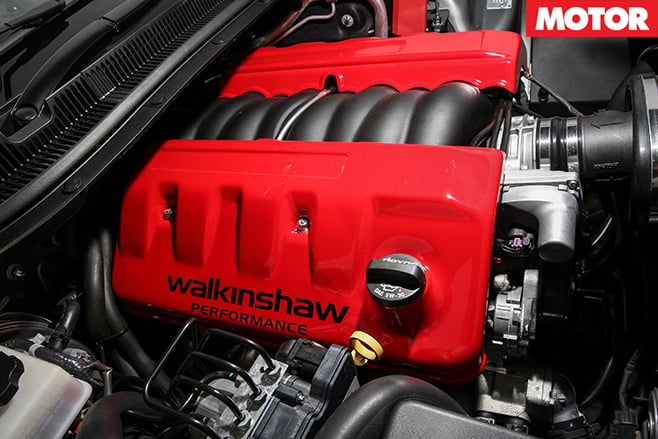
And since the supercharged LSA V8 in the HSV big-hitters only claims 400kW and 671Nm, I wanted to know how the hell a tune (rather than a pump) could create such a transformation.
So I asked Walkinshaw Performance’s Richard Jong the difficult questions. “Our W375 package was popular when we launched it a few years ago [in 2011],” he told me. “But now, some of those same people are looking for a bit more. But not all of them want to go down the supercharged path, so we developed the W407 package.”
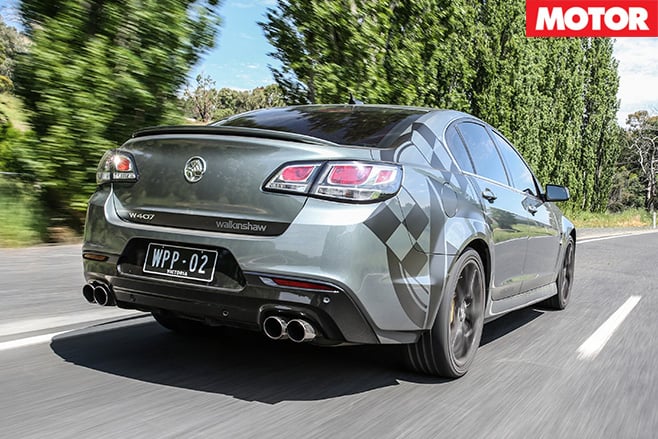
Of course, you’re already starting from base-camp with the 375 stuff which equals a set of ceramic-coated headers, high-flow cats and a three-inch cat-back set of pipes. There’s an over-the-radiator cold-air intake and the ECU is re-flashed to suit the 407’s temperament.
Even so, it’s a big old jump considering the lack of forced induction. So, 103kW from a revised camshaft, intake and exhaust, then? “Yep,” said Jong. No other changes? “Nope.” What gives?

And boy, can you ever. Pick it, that is. Yes, I’ve heard lopier idles, but none that’s being sold as a kit through an outfit like Walkinshaw Performance. Whether you’re gazing into the engine bay, sitting inside the car or standing behind those bazooka tailpipes, there’s absolutely no mistaking the signature jig of a lumpy stick. Okay, by Summernats standards, it’s relatively tame, but still…
Traditionally, of course, the big problem with big camshafts has been a fall-off in low-end torque; a situation that doesn’t recover until you’re up into the revs and, as they say in pubs and man caves everywhere, on the cam. Except this time around, we’re starting with 6.2 litres of injected V8, so if there’s any drop-off in off-idle performance, it’s one of those dead-set first-world problems you hear about on TV.
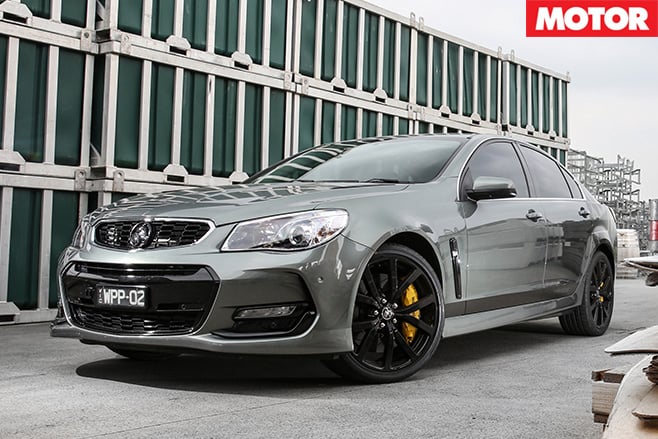
In a manual, you’d disguise that with a bit of clutch slip initially, but by the time the clutch was all the way home, I reckon you’d be in the same boat. Most people will deal with it. I certainly could.
Now, back to that slightly softer off-idle power-curve: I think it might actually be working in the W407’s favour. Stay with me. Traditionally, these things have been pigs to launch hard, even at a dragstrip. But the W407 just walked up to the start line, allowed me to select Sport mode in the tranny and then cannoned away from the tree like a bought one.

To the point where I reckon it records a quicker time than the on-road feel suggests. Our best was a 12.9-second run with a terminal of 181.4 and 0-100 in 4.8. Which means, of course, it can’t stay with the HSV Clubsport R8 LSA which, with its supercharged 400kW plant, gets it across the quarter in 12.5 and to 100 in 4.5.
The difference there, of course is possibly the blown R8’s lower torque and power peaks, but when you look at the terminal speeds (181.4 plays 184.8) maybe it’s closer than you think.

Of course, while the 407’s torque curve might lack the down-low meat-and-spuds of the LSA engine, the point of sacrificing some of that bottom-end jolt is to improve the top-end fizz. But since this is a relatively subtle camshaft, it shouldn’t be too dramatic. And that’s precisely how it feels.
There’s an appreciable increase in whup-ass as the tacho passes about 3000 and, from 3500 onwards, it’s really putting in. The engine definitely has a harder edge to it than the rather mellow 304kW tune in the VF SS. Oh, it’s still a sweet revver and never what you’d call harsh, but the rounded edges of the stocker’s power pulses have grown shoulders.

Next-door neighbours making scrunched-up, unhappy faces is one thing, of course, but eventually even you might tire of the racket. This won’t happen in the first few days of ownership, but eventually you might want to listen to the stereo or something. In blare-mode, the exhaust is just on the verge of droning at freeway speeds if you’re even slightly into the power, say, when going up a long hill.
The other thing you may learn to hate is the stink of unburned PULP at idle. This is all to do with the increased valve overlap on the W407 camshaft (we think) but it remains that if you’re standing down-wind of an idling W407, a sensitive nose will know all about it.

That, however, and every other so-called compromise of this package I could easily deal with on a day-to-day basis. I still have a niggling feeling that this is not 407kW-worth of shunt, but that probably says more about me and my suspicious mind than anything about the car itself. Because beyond that, I absolutely dug the thing.
I reckon the tune is absolutely spot on for the punter with an extra ten-large ($9990, to be exact) to hurl at their new SS-V and the changes turn it into a big sweetie of a thing with a bit of attitude, rather than some grumpy mongrel that wants to eat you.
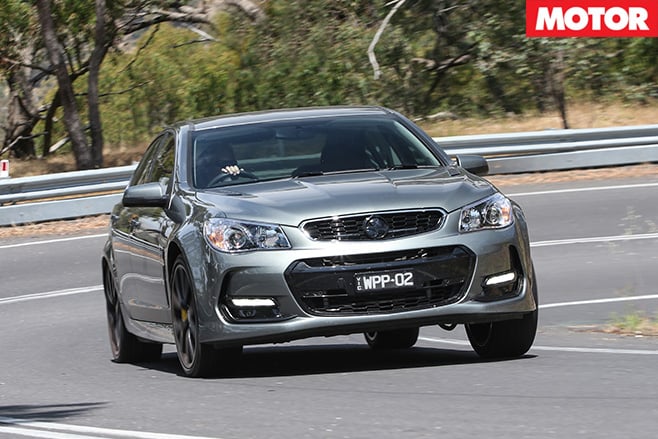
The other thing that occurs to me is that this engine proves that modern electronic management can make what would have been a problem child in the old days into something that is just a bit cheekier and playful, without being headed for Juvenile Hall every time you fire it up. I guess we already knew that much, but to have it confirmed in the metal is always satisfying.
And finally, it’s nice to see an old-school tuning method get results. It’s too easy in this Playstation world to forget that you can manipulate the fuel and spark tables up to a point, but for real results, you gotta go deeper in. Because if it was easy, we’d all be doing it.
SPECS body 4-door, 5-seat sedan drive rear-wheel drive engine 6162cc V8, OHV, 16v bore/stroke 103.1 x 91.9mm compression 10.7:1 power 407kW @ 6250rpm torque 695Nm @ 4950rpm power/weight 227kW/tonne transmission 6-speed automatic weight 1793kg suspension (f) struts, coil springs, anti-roll bar suspension (r) multi-links, coil springs, anti-roll bar L/W/h 4964/1898/1471mm wheelbase 2915mm tracks 1593/1590mm steering electrically assisted rack-and-pinion brakeS (F) 355mm ventilated discs, 4-piston calipers brakes (R) 360mm ventilated discs, single-piston calipers wheels 19.0 x 8.5-inch (f); 19 x 9.0-inch (r) tyre SIZES 245/40 R19 (f); 275/35 R19 (r) TYRE Bridgestone Potenza RE050A price as tested $67,680 (based on SS-V Redline auto) PROS Old-school charm on idle; increased performance; price of kit CONS Lacks crackle of SS; low-speed behaviour; doesn’t feel like 407kW STAR RATING 4.5/5
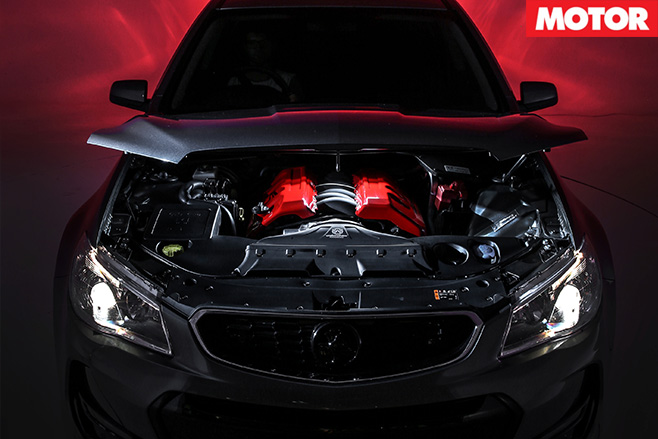
WALKINSHAW W407 0-10km/h 0.4 0-20km/h 0.8 0-30km/h 1.2 0-40km/h 1.6 0-50km/h 2.0 0-60km/h 2.5 0-70km/h 3.0 0-80km/h 3.6 0-90km/h 4.1 0-100km/h 4.8 0-110km/h 5.6 0-120km/h 6.4 0-130km/h 7.2 0-140km/h 8.1 0-150km/h 9.0 0-160km/h 10.2 0-170km/h 11.4 0-180km/h 12.7 0-400m 12.9sec @ 181.4km/h 100-0km/h 35.9m SPEED IN GEARS 1st 58km/h @ 6000rpm 2nd 99km/h @ 6000rpm 3rd 153km/h @ 6000rpm 4th 203km/h @ 6000rpm 5th 240km/h @ 6000rpm* 6th 240km/h @ 4100rpm*

